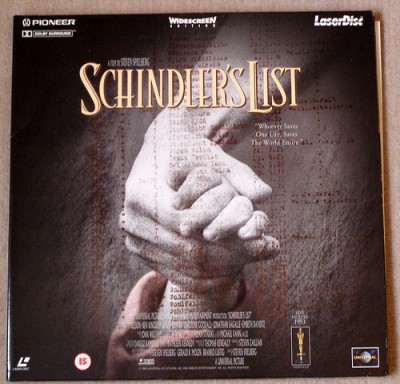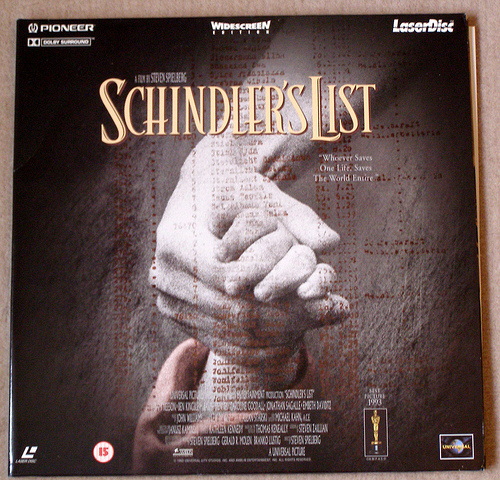
It has been pointed out that director Steven Spielberg’s mainstream success has inspired a turn toward broad, “public interest” works. For Spielberg, pop-history and film preservation have taken precedent over purely artistic endeavors.
If one were to mark this shift in Spielberg’s career, it likely started with the Holocaust drama “Schindler’s List,” for which the enormously popular filmmaker reportedly refused to accept a salary. Since then, his films have explored the soldier’s response to war, violence as an act of retribution against violence, and the relationship between human rights and federal law.
Each of these public interest, pop-art pictures (“Schindler’s List,” “Saving Private Ryan,” “Amistad,” and “Lincoln,” for instance) have taken on something of a culturally exempt status. Despite their graphic content, his WWII films have each been shown unedited on PBS and broadcast television, as if they were documentaries. And DVDs of “Lincoln” were recently donated to each middle and high school in the United States. Additionally, Spielberg has poured impressive amounts of money into the now-designated Stephen Spielberg Jewish Film Archive, preserving early Zionist propaganda films for historic posterity. These days, his art is almost indistinguishable from his educational philanthropy. And 2013 marks the 20th anniversary of his famed film about a German entrepreneur who saves many Jews from Nazi violence by employing them in his factory. The anniversary has been marked by the film’s debut on Blu-Ray.
Though raised in a home with Orthodox history, Spielberg is yet another liberal Jew, and his own attempt to emotionally process this dark chapter of history from a contemporary place of privilege is reflected in his choice to focus on German Oskar Schindler, rather than a Jewish protagonist. Re-watching the film in light of Yom HaShoah, and as a Jew by Choice, I identify with the magnetism of the Jewish plight, to which Schindler is compelled. Spielberg’s Jews are intellectuals, mystics, lovers: they are a dynamic collective, avoiding stereotypes about Jewish identity and rendering the Nazi rhetoric about the “true” nature of Jews all the more absurd for it.
The use of black-and-white for the body of the film, and the choice of Israeli violinist Itzhak Perlman for the musical theme, further accent the sense of tragedy. It’s melodramatic, and runs the risk of manipulation, but it’s hard to fault Spielberg here. The subject matter is devastating, and short of an entirely sparse picture — no music, full-color, simple edits and no close-ups, maybe the use of steady-cam instead of graceful camera movements — Spielberg’s choices are understandable.
What’s most interesting about the film after twenty years is how well it has held up. Let’s be frank: Spielberg goes for the gut every chance he gets, and despite its enormous success upon its initial release, “Schindler’s List” could be seen as a (poorly dated) product of its time. Instead, it remains fresh, its sense of horror just as visceral. Whether or not that’s due to its significant quality, or due to a lack of meaningful ongoing discourse about the philosophical, ethical, and cultural implications of the Holocaust, is a matter of debate. Somehow, I think the answer is a little bit of both.
But Spielberg’s body of work is not without its detractors. “Schindler’s List,” despite its multiple Oscars, is no exception. Perhaps most famously, filmmaker Stanley Kubrick (“2001: A Space Odyssey,” “A Clockwork Orange,” etc.) critically responded to the film by saying, “That was about success, wasn’t it? The Holocaust is about 6 million people who get killed. ‘Schindler’s List’ is about 600 who don’t. Anything else?”
Furthermore, Claude Lanzmann (director of the film “Shoah”) writes, “Spielberg’s film is a melodrama, a kitschy melodrama. One is affected by this story of a German swindler, nothing more than that.” Lanzmann also finds in the film an unreasonable dose of Zionism. “With that great reconciliation, Schindler’s grave in Israel, with its cross and the small jewish [sic] pebbles, with the colour which insinuates a happy ending … Israel cannot buy off the holocaust. The six million did not die to justify Israel’s existence.” These criticisms have run through much of Spielberg’s recent work, to be sure (although “Lincoln” appears to have fared better on that front, if reviews are to be believed).
Even so, “Schindler’s List” stands for many as the film about the Holocaust. It’s a powerful work to be sure, as emotionally devastating as it is carefully constructed. And as an effort from an American Jew to come to grips with the legacy of the genocide, it has perhaps had the most effect among the Jews of the Diaspora, who live with unparalleled religious and cultural freedom — even compared to that of Israeli Jews, for whom Orthodoxy is the established path, and other expressions suffer discrimination.
Typically, films about minority oppression are criticized when they tell their story from the perspective of a person of privilege: i.e. “Dances with Wolves,” or “The Last Samurai.” Why use privilege as a jumping off point for a story about oppression? Historically, Jewish identification was nearly inescapable — it wasn’t easy to “lose” one’s Jewishness. Today it’s easier than ever to leave Jewish identity behind, somewhere in the American melting pot. So perhaps the most compelling element of “Schindler’s List” is that which it currently shares with contemporary American Jews: the choice to engage with Jewish identity, culture, and history.
In the shadow of Yom HaShoah, and in the spirit of films like “Schindler’s List,” perhaps the horrifying details of Nazi genocide must be offset with the re-affirmation of our cultural distinctiveness. Perhaps its not enough to learn the story. Perhaps we must acknowledge we have an unprecedented choice, and then, choose our Jewishness again.
Editor’s Note: The initial printing of this piece described Spielberg’s family as “an Orthodox home,” which drew questions from our readership. Spielberg was bar-mitzvah’d in an Orthodox shul, with a mother from an Orthodox background. All this information is available in the article linked to above. However, to avoid confusion, my language has been clarified.

